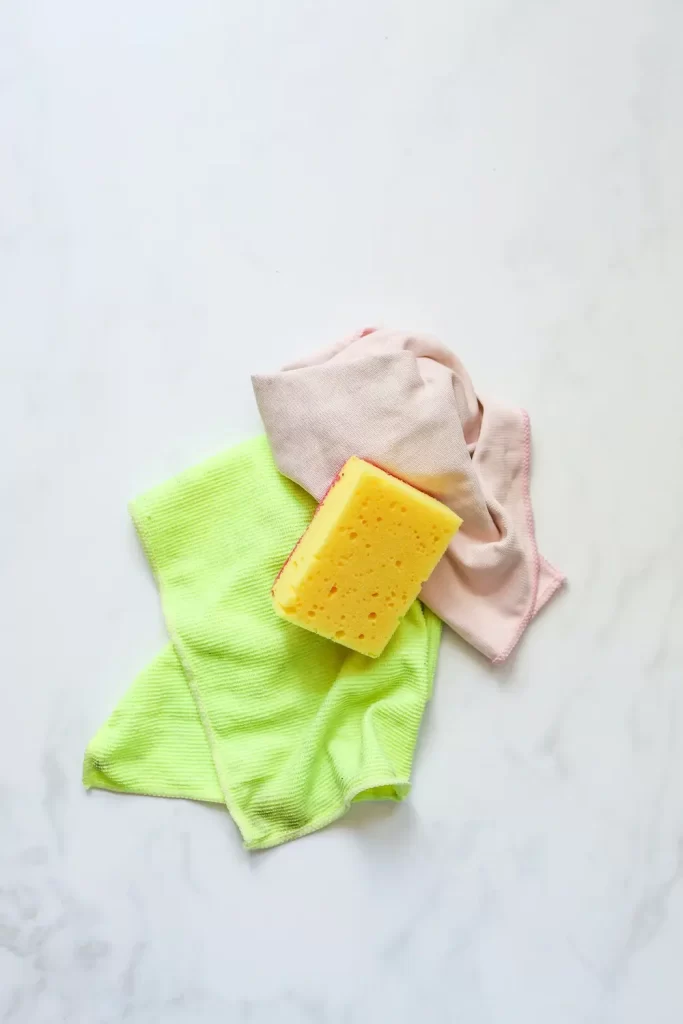There’s nothing quite like the aroma of freshly brewed espresso to kickstart your day or offer a soothing respite in the afternoon. But to ensure that your espresso machine consistently delivers the perfect cup of joe, it’s crucial to keep it clean.
Regular maintenance not only enhances the flavor of your espresso but also extends the lifespan of your machine. In this guide, we’ll walk you through how to deep clean your espresso machine, from gathering the necessary supplies to addressing common FAQs.
Why deep clean your espresso machine?
As the heart of your daily caffeine ritual, your espresso machine is a faithful companion in producing those luscious shots of espresso that awaken your senses and keep you going. But just like any other piece of equipment, your espresso machine requires proper care to maintain its performance and ensure the quality of your brews. Here are some reasons you should deep clean your espresso machine:
1. Flavor consistency
One of the most significant reasons to deep clean your espresso machine is to maintain consistent flavor in your coffee. Over time, oils, mineral deposits, and old coffee grounds can accumulate within the machine’s internal components. These residues can impart unwanted flavors to your brew, altering the taste profile of your espresso. Deep cleaning removes these contaminants, allowing the natural flavors of your coffee beans to shine through.
2. Prevents bitterness and off-tastes
As residues accumulate in your machine, the risk of bitterness and off-tastes in your espresso increases. Oils from coffee beans can go rancid, and mineral deposits can clog or alter the water flow. This can lead to over-extraction, where bitter compounds dominate the flavor. Regular deep cleaning prevents these issues, ensuring a smoother and more enjoyable coffee experience.
3. Extends machine lifespan
Your espresso machine is an investment. Just like a car that needs regular maintenance to run smoothly, your espresso machine requires attention to function optimally and to extend its lifespan. Regular deep cleaning helps prevent wear and tear caused by residue buildup, reducing the chances of mechanical failures and breakdowns. A well-maintained machine can serve you faithfully for years to come.
4. Improves water quality
Water quality plays a significant role in the taste of your espresso. If your machine’s water reservoir and internal components are not cleaned regularly, mineral deposits can accumulate, affecting the water’s purity and taste. Deep cleaning helps maintain the quality of the water used for brewing, ensuring that it doesn’t introduce any undesirable flavors to your coffee.
5. Ensures proper brewing pressure
The internal components of your espresso machine, such as the group head and the solenoid valve, are crucial for maintaining proper brewing pressure. Residue buildup can disrupt this balance, leading to uneven extraction and weak shots. Deep cleaning removes obstructions and ensures that water flows smoothly through the system, guaranteeing consistent pressure and extraction.
6. Hygiene and food safety
Espresso machines are prone to the growth of mold, bacteria, and other microorganisms if not cleaned regularly. These can thrive in damp, dark environments such as the steam wand and water reservoir. Deep cleaning not only eliminates potential health hazards but also provides a clean environment for crafting your coffee.
7. Professional aesthetic
If you take pride in your coffee-making skills, maintaining a clean espresso machine adds a touch of professionalism to your setup. A sparkling, well-kept machine showcases your dedication to the craft and creates an inviting atmosphere for guests and customers alike.
Supplies needed to deep clean espresso machine
- Clean, damp cloth
- Soft brush or vacuum
- Cleaning solution (usually a mixture of water and vinegar)
- Microfiber towels
- Water filter (if your machine has one)
- Group head brush
- Blind portafilter basket
- Cleaning tablets (if recommended by the manufacturer)
Step-by-step cleaning process



1. Detach and clean removable parts
Start by turning off and unplugging your espresso machine. Remove all detachable parts such as the drip tray, water reservoir, and portafilter. Wash these parts with warm, soapy water and rinse thoroughly. Dry them with a clean cloth before reattaching them.
2. Clean the group head
The group head is the part of the machine that holds the portafilter. Use a group head brush to clean any leftover coffee grounds or debris. If your machine has a three-way solenoid valve, you can also use a blind portafilter basket to backflush it. This helps clear any buildup in the valve and ensures proper water flow.
3. Address the steam wand
If your machine has a steam wand, it’s essential to clean it thoroughly. Wipe the exterior with a damp cloth, and then use a steam wand cleaning brush to remove any milk residue from the tip. Run steam through the wand for a few seconds to clear any remaining debris.
4. Run water through the machine
Fill the water reservoir with a mixture of water and vinegar (or follow your manufacturer’s cleaning solution recommendations). Run the machine without coffee grounds through a brewing cycle. This helps clean the internal components and remove mineral deposits that can affect the taste of your espresso.
5. Rinse and repeat
After the vinegar solution cycle, run several cycles of plain water to thoroughly rinse the machine. This ensures that no residue or vinegar taste remains in your espresso.
6. Clean the exterior
Wipe down the exterior of the machine with a clean, damp cloth. Be sure to clean any buttons, knobs, and surfaces that may have come into contact with coffee spills.
7. Clean the water reservoir and filter
Empty and clean the water reservoir. If your machine has a water filter, replace it according to the manufacturer’s guidelines. This step is crucial for maintaining water quality and prolonging the machine’s life.
8. Optional cleaning tablets
Some espresso machines recommend using cleaning tablets for a deeper clean. Follow the manufacturer’s instructions for using these tablets, as they can vary based on the machine’s specifications.
FAQs about deep cleaning your espresso machine
How often should I deep clean my espresso machine?
It’s recommended to deep clean your espresso machine every 1-2 months, depending on usage. If you use your machine frequently, consider cleaning it more often to prevent buildup.
Can I use regular vinegar for cleaning?
Yes, white vinegar is an effective and natural cleaning agent. Mix equal parts of water and vinegar to create a cleaning solution for your machine.
Why is backflushing necessary?
Backflushing helps clear any coffee grounds or oils that may have accumulated in the three-way solenoid valve, ensuring proper water pressure and flow during brewing.
Can I put the detachable parts in the dishwasher?
Check your machine’s manual to determine if the detachable parts are dishwasher-safe. However, hand washing is generally recommended to prevent potential damage.
My espresso tastes off even after cleaning. What should I do?
If your espresso still tastes strange after cleaning, it could be due to factors like old coffee beans or a worn-out burr grinder. Ensure you’re using fresh beans and consider checking the grinder’s condition.
Are cleaning tablets necessary?
While not always necessary, cleaning tablets can provide a more thorough clean by breaking down coffee oils and residue that may not be easily removed with water and vinegar alone.
Want more home deep cleaning tips? Check out how to deep clean your apartment.






[…] How to deep clean your espresso machine […]